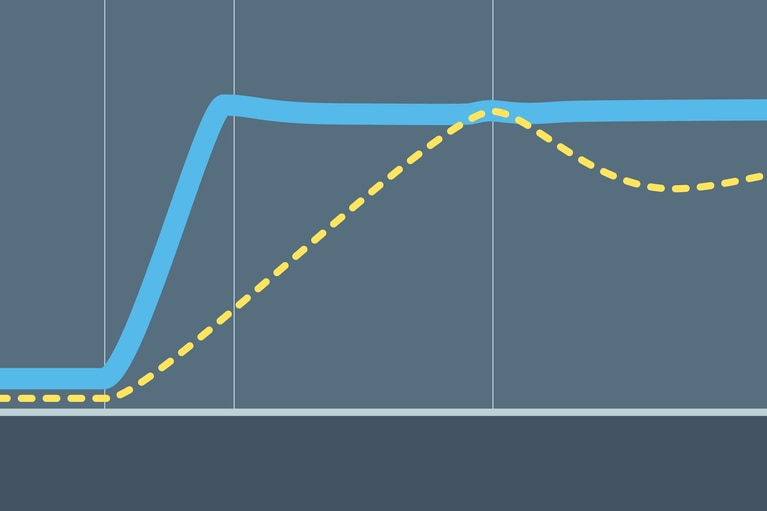
ReVolt – 技术问答
ReVolt 正在解决好莱坞片场的排放问题,下一步将把便携式 DC 电源应用于建筑工地、应急响应事件等领域
尊敬的用户:
为了改进 Vicor 网站,我们将于美国东部时间 12 月 29 日上午 11:30 至下午 2:00 对网站进行维护。
在此期间,您可能无法查看网站的某些部分,特别是产品页面和产品型号列表。
对于给您带来的不便,我们深表歉意,并感谢您的耐心等待。
– Vicor 网站团队
When electronic equipment is connected to the AC mains, it has the potential to generate common-mode electrical noise. If this is allowed to flow back on to the mains supply line, it can disturb other equipment also connected to the same line.
Manufacturers design capacitor-based power line filtering into their systems to decouple any such common-mode noise produced by the equipment’s power supply, preventing it from reaching other equipment through the mains power line. The reliability of these capacitors is critical to the safety of the equipment’s users.
Line filter capacitors are classified either as X-capacitors or Y-capacitors. X-capacitors are connected between line and neutral, to protect against differential mode interference. Their failure does not create conditions for dangerous electric shock, although it can create a fire risk. However, Y-capacitors are designed to filter out common-mode noise, and are connected between line and chassis; if they short-circuit, they create a risk of shock to the user.
Y-capacitors are designed to enhanced electrical and mechanical reliability standards. Capacitance values are also limited to reduce the current passing through the capacitor when AC voltage is applied, and reduce the energy stored to a safe limit when DC voltage is applied. Capacitors must be tested to applicable standards to qualify them for use as Y-capacitors.
The EN 132400 Standard was issued on 26 June, 1995 replacing all the European National Standards in force up to that date. This was identical to the International Standard IEC 60384-14 2nd Edition 1993. Since then, to make CENELEC and IEC standards identical in name as well as specification, the European Standard EN 132400 has been superseded by EN 60384-14 that is identical to the International Standard IEC 60384-14. Any European national body can issue approvals, with validity recognized by the bodies of all the other CENELEC member countries with no need to repeat the tests.
USA: UL 1414 for across the line applications and UL 1283 for Electromagnetic Interference filters Canada: CAN/CSA C22.2N°1 and CAN/CSA 384-14 China: GB/T14472
EN 60384-14 defines sub-classifications for both types. X1 capacitors are used for high pulse applications, while X2 and X3 types are used for general-purpose applications with different peak pulse operating voltages and peak value surge voltages. Y-capacitors, which are used to bridge operational insulation, are classified as Y1, Y2, Y3 or Y4 according to type of bridged insulation as well as AC and peak voltage ratings. Y1 class capacitors are rated up to 500VAC, with a peak test voltage of 8kV. Y2 capacitors have 150 to 300VAC ratings and a peak test voltage of 5kV. Y3 capacitors are rated to 250VAC with no peak test voltage specified. Y4 capacitors are rated to 150VAC with a peak test voltage of 2.5kV.
These include impulse voltage, endurance and active flammability tests. Application and parameters for these tests depend on the capacitor classification and sub-classification.
Two common types are metallised paper/film and ceramic. For Y-capacitors, ceramic types are less expensive than metallised film, but unstable over time and temperature and less mechanically stable. Ceramic failure mode also tends toward short circuit, whereas metallised paper and film types tend towards open circuit.
Vicor products including FARM, ARM and AC Front End have filters that include Y-capacitors. Refer to the FARM Design Guide and Application Manual for an example of an integral input filter comprising a common-mode choke, Y-capacitors and X-capacitors.
ReVolt – 技术问答
ReVolt 正在解决好莱坞片场的排放问题,下一步将把便携式 DC 电源应用于建筑工地、应急响应事件等领域
双向供电与快速瞬态响应能力赋能可扩展的主动悬架系统
正弦振幅转换器™(SAC™)模块凭借其独特的双向供电功能与瞬态响应速度组合,为主动悬架系统开辟了全新可能性
提供更高的峰值功率和更快的动态瞬态响应,实现更轻、更强大的电动汽车架构
随着时间的推移,市场上的电动汽车 (EV) 对电驱动系统的依赖程度日益加深,例如线控转向、线控制动以及主动悬架系统等
电流倍增器:为 AI 处理器及其他严苛应用供电的明智之选
AI 处理器需要解决低电压、高电流的严苛挑战,这将会导致电源系统设计产生瓶颈。了解 Vicor 的电流倍增技术如何改变这一现状


